Family News - 2011 july 14th
Contents
- A word from Superior general
- Father Etchécopar wrote...
- Confessions of an elder brother
- Reflexions in Fraternity
- Limoges: making joy our choice
- 5 minutes with Fr. Jaïr Pereira da Silva
- The extraordinary life of Sister Marie (7)
| format PDF |
A word from Superior general
IT IS WHEN I AM WEAK THAT I AM STRONG
Right from the account of Creation, Scripture tells us quite clearly what man is for Her: Then the Lord God formed man from the dust of the ground, and breathed into his nostrils the breath of life, and the man became a living being. (Gen 2,7) Fragility renders us humble, well placed and open to the challenges and possibilities coming from the Creator. All is a gift, all is grace. We are only the earthenware jars that hold this treasure, to make it clear that such an overwhelming power comes from God and not from us. (2 Cor 4,7) Such is the permanent feature of biblical anthropology.
Man was created fragile, therein lies his greatness. To admit ones fragility is to experience ones limits and ones dependency: what I am, what I have, and what I can do have all been given me; my blossoming is linked to my ability to transcend myself, to get out of myself so as to find out what makes me grow and makes me a better person. In this case, my fragility is a blessing, a bit like a spring which drives the individual out of his shell so as to display his possibilities, like in the parable of the talents (Mt 25, 14-30). But it is necessary that man should be aware of his fragilities inviting him to exceed his limits and to create new possibilities and new energy. For it is when I am weak that I am strong (2 Cor 12,10).
Weakness is a blessing; the curse would be to be withdrawn and believe that one can do everything alone, to think one is a god, or on the contrary, through lack of confidence to leave unemployed the potential which the Creator has given me. Seen like this, life becomes a threat to development and fulfilment. So that the blessing doesnt become a curse and man doesnt withdraw within himself, God has given him a companion, the woman, to get him out of himself and become one with her. Woman is the Creators gift which invites man to leave his father and mother and to outdo in love so as to ensure the maintenance of life, and the contrary.
The misfortune with Adam and Eve was to have wanted to be like gods, able to do everything without the need for a Creator. With the result that they withdrew and hid through fear and shame. Full of resentment Cain turned away from God who preferred the sacrifices offered by his brother Abel. The inhabitants of Babel, overwhelmed by the progress made with the discovery of bricks and mortar, decide to build a megalopolis to carry on their name and avoid being scattered throughout the whole world. By doing this, they disobeyed the Creators order: increase and multiply and fill the whole earth and subdue it (Gen 1,28). In the Gospel Peter seems to be withdrawn, but the love and trust of Jesus opens up for him situations which he never suspected. The misfortune of Judas was to have withdrawn in his despair result of his treachery. On Easter evening the apostles withdrew through fear of the Jews. But the presence of the Risen Christ who breathed on them made them get down on the streets to bear witness, to the ends of the earth, to the salvation brought through the offering of Jesus on his Cross.
If man, drawn from the dust of the earth and meant for a blessing, withdraws within himself, deserves to be cursed by God, his Creator; however there is a way out: for God cannot withdraw within his pain, his anger or his desire for revenge. In that way, we are like Him: He too would give way to misfortune if he were to withdraw within himself. But God is power and exceeding in love. He doesnt try to win at all costs; he accepts to lose, not to be always right, to be exhaustive in forgiveness ; He opens up new pathways. He gives a new future to his creature who found himself in a mess, condemned to destruction and death. Even when he disobeyed you and lost your friendship you did not abandon him to the power of death. (4th Eucharistic Prayer). Neither the woman, nor the shepherd, nor the father in the parable withdrew into their pain; they did all they could to find the drachma, the strayed sheep or the missing son; having found them they were full of the joys of life (Luke 15).
In the second epistle to the Corinthians (4,6-7) it is easy to understand why God shaped us from the dust of the earth: mans weak state is a blessing, for the clay enlivened by the divine breath can reflect His glory. This clay is worthy of God, being made in his image and likeness; it is clay created by love and capable of love. With the Incarnation this is even more obvious; on the face of Jesus, the Incarnate Word there is the reflection of the glory of God which shines in the heart of all the baptised.
In Jesus life all is fragile, vulnerable, deprived of strength. There is the fragility of the little child born in Bethlehem, wrapped in swaddling clothes and laid in a manger, for want of a place in the inn for his modest family. There is the fragility in the massacre of the innocents ordered by Herod. But he was protected by Joseph and obliged to flee into Egypt. There is the fragility of an innocent man falsely condemned who has no one to take his defence for all have abandoned him. There is the experience of death on the part of a living God, proving that it is love and not power which matters. Finally it is only Love and not power which is stronger than death.
In a word it is frailty as a blessing which constitutes the whole of Jesus preaching: the beatitudes, the mustard seed, the seed sown in the ground, the yeast in the dough, the five loaves, the two fish, the widows mite, the washing of the feet, the gift of life, forgiveness, service and love.
Gaspar Fernandez,SCJ
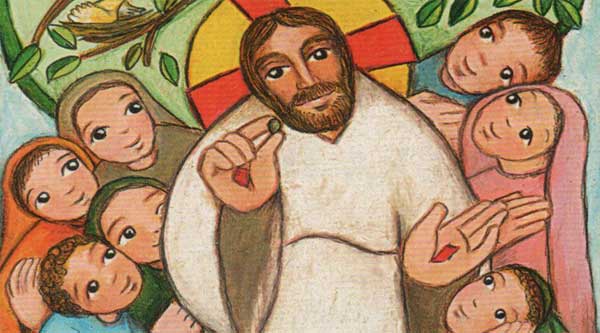
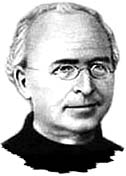 Father Auguste Etchécopar wrote...
Father Auguste Etchécopar wrote...
to his family, 24th July 1866
How sweet are the feelings of hearts which love each other in God! Once more we have experienced it; but if narrow-minded qualities and mutual love of those who love each other here below, can produce such lively feelings, what is going to be our joy when we shall see God, in Heaven with his Beauty and his Love for us, and when we see ourselves in Him and Him in each one of us?
But what we are hoping for in a better life, we can start it here below, by loving Jesus ever more and more, by being united to Him by prayer, the sacraments, humility, gentleness and great charity, and in seeing Him only in all creatures and his loving will in everything that happens to us.
Dear Madeleine, that is how your Heavenly Patron conducted herself. As soon as she got to know Jesus she left everything for Him. She broke with her past life and in a dazzling moment threw herself at the Lords feet during a banquet. She exchanged the instruments of sin into instruments of penance and good works; she used her eyes to cry, her hands to wash the Saviours feet and her hair to wipe them, her lips to kiss them and her perfume to anoint them! She concentrates on Jesus Christ the ardour of her heart. May she teach us the path of such humble, generous and persevering love.
Reviewing one's life
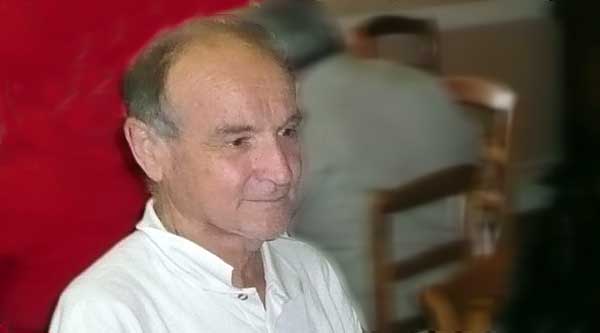
CONFESSIONS OF AN ELDER BROTHER
We are publishing here below a text written by Fr. José Mirande, from the scholasticate of Belo Horizonte (Brazil) for Sneha Jwala, annual review of the community of formation of Bangalore (India).
From the day I discovered, through the Indian sociology book, the existence of the four Ashrama of human life, I was pleased to read my own life according to that insight. Today, at 75, it is easy for me to recognize in my past existence the time of apprenticeship up to priestly ordination, then the grihastra with the first parish ministries, the period of transmission to younger brothers of a spiritual experience, in the responsibility of formation, and now the sannyasa, surely not begging my bread, but bearing other dependencies, like the necessity of purifying blood because of the laziness of my kidneys (tools and persons), the need of drivers to go here and there, mainly to clinic care, the lovely support of my community brothers...
In fact, I could divide in two greater parts the four aspects of my ashrania. The first would be marked by a joyous obedient creativity, with the developing of a lot of illusions and personal perspectives. The second consists in a greater submission to the realities I had to confront, from the forties on. The transition came with the death of my friend and superior Father Geraldo Goncalves. I had then to assume the charge of superior of my brothers for a short time, the task of formation for a longer one, in a way that could be seen as human promotion. But the real change in that moment came from the opportunity of a social and pastoral work close to the slums of our then parish. A work strongly organized together with a team of 4 young people, with weekly planning and valuation, visits to the poor people, etc. As a result, communities began to be organized around faith and social questions, and we ourselves learnt through the contact of these persons how to try to solve impossible problems within our limitations. This was a true passage from ideas to a more concrete, or mature, attitude.
I like to imagine that this period corresponds to the one that made the first monks of the Church mention the Midday devil and its temptations. It drives me to see the same scheme in the biography of Saint Michael Garicoits. For him, the moment of the change could be on the year 1841 (he was then 44). Up to that date, he is the obedient, joyous and creative worker of the Church. Within a great fidelity and even submission to the Bishops and spiritual guides of the discovery of his way, he founds our Congregation, in which he establishes a strict method for the work of the missionaries, begins the education task at Betharram, launches the institution of the Brothers... But on 1841, comes the rule of Bishop Lacroix, who does not accept that Betharram be a true Congregation.
Michael Garicoits will submit radically. He foresees a problematic situation and lives in a kind of dependency, having taken obedience as the chief scope of his Congregation. His Greatness asks him to do this and that, and he does, even when there is no logic. He opens a lot of schools, sends a great team to Argentina, welcomes, after a long negotiation, the members of the institute of Holy Cross of Oloron... No doubt, such acceptance has very concrete inconveniences. So some schools have to be dropped by Betharram a short time later (Mauléon, Asson). Several teachers, prematurely thrown into education, consider literary call above their religious consecration, and leave the institute (Espagnolle brothers, Lapatz brothers, Beudou, Hayet...). And Michael himself enters in his sannyasa, losing his health (his first VCA is on 1853 and will repeat almost every following year up to his death).
As I am directing this word to junior brothers of mine, I feel necessary to clear that there are moments of very concrete adaptations in the ideal we forge of our priestly life, so that our faith, as well as our spiritual experience, must be the support of these struggles. There must be a growth in our practice of religious vows according to the various moments and circumstances of our life. So I pray and wish for all of you a very conscious and joyous commitment through the first vows, and a firm perseverance of all.
José Mirande,SCJ
Betharramite Laity
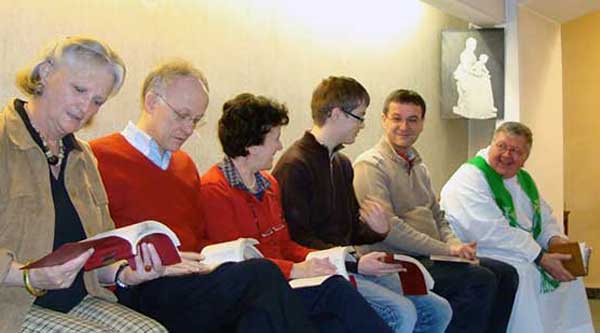
REFLEXIONS IN FRATERNITY
After the Regional Chapter of January 2011, the Council of the Fraternity tried to throw a light on what is characteristic of the Charisma of St Michael Garicoits uniting religious and laity; the different ways of being associated with Betharram; what it means to be a member of the Me Voici Fraternity. This text will be largely discussed at the meetings which are to take place 23 24 July at Betharram.
THE RELIGIOUS
The Betharram family was born of the intuition of St Michael Garicoits from how he envisaged the Church of his day and which caused him to cry out If only we could assemble a society of priests. To this body of priests he entrusted a special MISSION: Be the bearer of the dimension of the Incarnation of the Son of God in a human heart; Imitate Christs Heart, by being full of Gods love and by showing the face of God to the world.
The Congregation of the Religious of Betharram exists for the fulfilment of this Mission and has adopted a Rule of Life to decide how it will be faithful to such a Mission and how to be part of the Church by: A simple and real presence; Accepting what is different; Desiring unity; Dedication and absolute obedience; Warm heartedness (whatever touches the heart).
By VOCATION, by Gods call each one is called to discover and invent the way which will help him to be himself, that will develop all his natural abilities, to respond to the deep desire which is his to correspond to what God is proposing him to live. On each ones route, there are encounters which are signs of the route that God is proposing.
THE LAITY
For the laity, to be part of the Betharram Family means: Having met someone, a community, an institution which shows the joy of knowing that they are loved by God, just like St Michael Garicoits. Having entertained the longing to share this happiness.
It is this that determines the quest to discover what Betharram is all about, to get to know St Michael Garicoits, to deepen what he proposes as a spiritual way of life. The foundation of this discovery is the study of the Spiritual Doctrine.
The special mission of the laity in connection with that of the Congregation could be summed up like this: To reveal together the God who loves us, and who has been pleased to be loved; Share the joy of this discovery; Be witness to it by ones life style in the limits of ones station in life; Bear the spirit of St Michael Garicoits in all our relations (cordiality, generosity etc); Take care to fraternise with all the differences which exist in the Church.
THE "ME VOICI" FRATERNITY
Every Christian has for vocation to show the world the Love of God, revealed in the Heart of Christ; the vocation of Betharram is to do this with the special stamp of Me Voici.
For the past 20 years men and women have been meeting in what they have come to call the Me Voici Fraternity. In fidelity to this inspiration they have drawn up Landmarks for a life in the form of a Charter together with a few rules for organisation, a Council of the Fraternity composed of three laity elected and a religious named by his brothers. Its not really a rule of life; its up to each one to invent his relationship with the Lord, his own Christian life. To belong to the Fraternity is not another commitment, but a new angle given to his life and the chance of sharing that life. As well as the monthly meeting of those who form a group, the good operation of the Fraternity depends on a certain number of points which are common: A bulletin to keep in contact with the Fraternity; A yearly retreat given by a Betharramite religious; A meeting at the end of July to share what has been happening, have a moment of teaching and launch the new year; Renew ones commitment during the July celebration or by proxy in the event of absence. A topic for the coming year to be observed with great freedom but which has the merit of creating unity; A Prayer sheet; An annual subscription to help in the functioning of the Fraternity, help where necessary to attend a meeting occasionally. Suggestion of a personal contribution to the works of the Congregation.
The Fraternity Council tries to keep contact with all the groups. However it isnt necessary to be member of the Fraternity to be associated with the Betharramite family in this Vicariate. Finally note that the Me Voici Fraternity was founded in France. Other Betharram laity, in other places are otherwise involved.
ANY QUESTIONS?
Are the people concerned fully satisfied with this method? If not, what would need to be changed? To deepen the spirituality of St Michael Garicoits, live the charism of St Michael Garicoits, belong to the Fraternity: these are three different ways of being associated with Betharram. Are there any others?
What means could be adopted to be better known, to be welcoming as member of the Fraternity?
Testimony
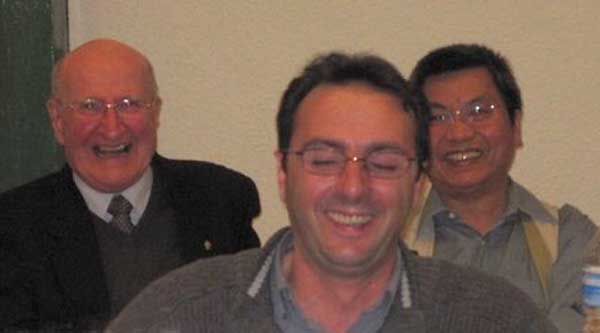
MAKING JOY OUR CHOICE
By decision of the Regional Council ratified by the General Council on 3 February the Betharram Community is leaving Limoges. At the beginning of the Mass celebrated in St Josephs Church on the 10 June, a lay member of the Me Voici Fraternity delivered the following talk and so doing, set the tone for saying good bye.
The joy of saying thank you to the parishioners from Saint Martial who are receiving us, to Mgr Kalist, Bishop of Limoges and his Vicar General, to Jean-Dominique Delgue, Superior of the Vicariate France-Spain, to the diocesan clergy, to the friends of the religious and, of course, to the Sacred Heart religious, here or elsewhere, by thought those in the Nursing Home or with the religious who now are resting in the beautiful cemetery at Betharram.
Choosing the joy of saying thanks for the long years in the service of the diocese of Limoges (from 1948) by those whom their founder, St Michael Garicoits, used to call flying camps. Flying camps which, strengthened by the charisma of Me Voici brought the Heart of Christ close to the heart of the population of Limoges, on the roads to Saint Leonard, Chalus and Le Dorat.
Flying camps which launched the youth of the chaplaincies, the Eucharistic Youth Movement, the Young Christian Workers; flying camps which helped to launch the disabled, the patients of the Pastoral Care of the Sick in our hospitals; flying camps which supported the Secours Catholic, the Catholic Campaign for Development, Christians against Torture; flying camps which were particularly careful of the pupils in their Ozanam school and in Catholic education.
The desire of those religious to be at the service of the humblest in the charitable works which others werent interested in. Flying camps of Gods little helpers.
Choosing joy with the Me Voici Fraternity. In the complementary between the religious and us, laity of France and especially here in Limoges, we try to put our Charter into practice. We, the laity, trying to be faithful to the Evangelical message of love through our family and professional obligations, our political and social commitments; we, the laity, trying to be open to the world with the Missionary Fathers of the Sacred Heart present in America, in Africa and in Asia; we, the laity, wishing to be bearers of that Hope which God entrusts to us, Lord of Heaven and Earth, and Jesus Christ in a movement of love, saying to his Father Here I am.
Because we are loved by God, let us choose Joy!
Dominique Combe
Fraternity of Limoges
5 minutes with...
Father Jair Pereira da Silva
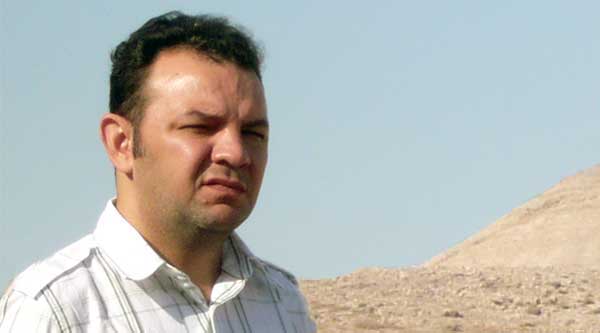
Meeting with Fr. Jair Pereira da Silva, superior, at 39, of the "Mother House" of Betharram in Brazil: Passa Quatro (Minas Gerais)
Nef: Among the Brazilian Betharramites, you are one of the few who were born neither in the State of São Paulo, nor in the State of Mina Gerais. How did you come to know the Congregation?
- The ways of God are really quite different from those of men and women. God put the Congregation on my road through a Catholic magazine, The Messenger of the Sacred Heart of Jesus, which monthly publishes articles and news in honour of the Sacred Heart. I was flipping through it, when I came across these words: Here I am without reserve, without delay. I immediately wrote to the given address, in Belo Horizonte; it is Br. Mauro who replied. I had then no access to Internet, so we kept in touch by letter for one year. At the end of this time of guidance, I was invited to make an experience in Belo Horizonte. I left everything behind and went there. And I am happy about it. God does not always use pleasant means, but his ways are sure.
What impressed you most during your initial formation?
- Every stage of formation was important. The postulate in Belo Horizonte was fundamental in my formation process. Side by side with P. José Antônio - whose simplicity was a great teaching - and Br. Mauro, I made a great experience of brotherhood. A crucial time was my novitiate in Paulinia, under Fr. Angelo Recalcatis guidance: it was a time of grace, of meeting with God. I am also willing to stress the importance of my stay in Bétharram, in the framework of the preparation for perpetual vows. It was a difficult, but very profitable time: I felt the hand of God on my life, in particular through the friendship of the French fathers and brothers, the example of prayer and brotherhood which I witnessed over there. Yes, I give thanks to the Lord for this opportunity of living at Bétharram.
After 10 years of first profession and 5 years of priesthood, you are superior, formator and parish priest. How do you deal with all these responsibilities?
- I think sometimes that God chooses the weakest and gives them his strength. Did not the Congregation entrust such responsibilities to me, who come from the Nordeste, from Paraiba, where the poor live among the poor? But Ill tell you a secret: God is my strength; He is my support and my self-confidence. Through him, I can face difficulties and daily fights.
In what consists your mission in formation?
- I am in charge of accompanying the candidates to religious life and of preparing them for the novitiate. It is already my second promotion. It was difficult at the beginning, but one learns little by little; and also, when one lets himself be guided by God, God opens up the road. Concretely, besides the university schedule, the candidates have a personal interview with me, every week; this is the core of formation. At the same time, I attend myself a course for formators, which is highly important, since it makes me see my fragilities and gifts. This is a process of growth which is long and demanding, but this is the condition so that I may make my contribution to others formation. Another course attended in Rome, at the Salesian university, had already widened my outlook. But the Institute for formators in São Paulo was a fundamental tool allowing me to assume the part entrusted to me: from one session to another, the course is giving to me the key elements, both theoretical and practical, to help the young people. Besides the fact that one learns something every day in his life, I am learning that it is necessary to come back to things, to evaluate them, to ask for advice, to pray. For me, prayer life is essential.
Bétharram started in Brazil with the foundation of Passa Quatro in 1935. How is it when one is, like you, the superior of an historical institution?
- To work here is a great responsibility which demands a lot, and gives a lot too. As for the Middle school São Miguel, there is a team work; we decide jointly (Ednaldo, Anibal, Fr. Luiz and I), in a climate of good understanding. The important thing is not to know whose decision prevails but to coordinate things, as we do, in a spirit of respect and unity. At present, Fr. Luiz, who is more involved on the front line, endeavours to taking advice on how to run a middle school. From 2010 on we have been taking steps to strengthen the catechesis. Today, the whole coordination team participates in the human and religious formation of the students, and in the pastoral work with families. What is at stake for the congregation is to allow the young to experience the Christ, in a Betharramite fashion. Yet, it is not easy nowadays to maintain a school
Besides the middle school, the community is also in charge of the parish. How do you live this duality?
- According to me, the fact that we run the parish of Passa Quatro is a main advantage both for the middle school and for the house of formation; it fosters the integration of the works and the relationship with the population. There is a mutual enrichment. For years now we have been in the parish, and the faith of people was influenced by the school of Betharramite spirituality.
-Back from Bethlehem, I have a feeling of hope. Having taken the pulse of the Congregation, with its strengths and weaknesses, made me aware that God loves Bétharram. As for Brazil, I can see it with the same gaze of hope: if God inspires in the heart of young people the desire of living their vocation with us, it is because He relies on our Congregation in Brazil. And since God favours us with numerous vocations, we cannot but give thanks to Him for His generosity. At the same time, as it is said in the Gospel, we cannot pour new wine into old wineskins (narrow-minded spirits, rivalries, discords, intrigues, gossip, antipathies). As long as we will not have enough courage for reconciliation, we will remain locked up into our whims and we will not make Gods will. This is what is lacking today: life, forgiveness, truth. We are lacking with charity, we have difficulty in doing good. As saint Joséphine Bakhita would say: to do good, to be good, this is what is always lacking in each of us.
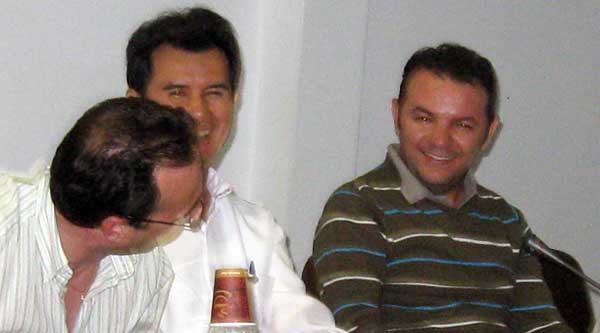
7. THE FUNDATION OF BETHLEHEM (1875)
Quite soon after her return to Pau, Sr Marie spoke about the foundation in Bethlehem. There was hesitation after the unfortunate adventure in Mangalore. But Sr Marie didnt hesitate. God wants this operation, and it will take place. Youll see that the problems will disappear when God so wills.
And there were countless difficulties coming to the fore. For the finances, Sr Marie found the perfect solution with her dear friend, Mlle Berthe de Saint-Cricq Dartigaux (1835-1887), granddaughter of a minister of Charles X. Fr Estrate was her spiritual director as he was for Sr Marie. Mlle Berthe invested all her fortune in Sr Maries foundation and she was a priceless help in all her undertakings with the authorities. Already with Mgr Lacroix, the ever prudent delayer. He was dragged into the adventure after many supernatural interventions. On entering the cloister of the Carmel in Pau in 1874 with Mlle Dartigaux, he was obliged then and there, under the influence of Sr Marie, to write to the Holy See asking for permission to make a foundation in Bethlehem.
Rome consulted the Patriarch Bracco of Jerusalem, who replied in the negative. The whole thing was dragging out. But Sr Marie had powerful advocates in Heaven. It was Pope Pius IX who, personally, signed the decree in May 1875, despite the opposition of the Patriarch Bracco and the Cardinals of the Propaganda, intimidated by the monopoly exercised by the Franciscans in the Holy Land.
Finally on the 8th September 10 Carmelites, including two Lay Sisters (together with Sr Marie) and Mother Veronica arrived in Jerusalem where they were graciously received by the Patriarch; on the 11th they set out on foot for Bethlehem. They lodged at the Casanova and then rented provisionally the Morcos house for 100 napoleons.
As soon as they arrived in Bethlehem on 11th September, a flight of turtle doves was for Sr Marie the exact spot for the future Carmel, which could be seen from Morcos and separated by a deep ravine. It was decided to buy the piece of land straight away. The obstruction from a Christian was soon overcome thanks to the intervention of the Consul of France and the Alvarado of the Governor who ended up by insulting him. So by the 23rd September the transaction was concluded. For the purchase and for the first works, Mlle Dartigaux had confided in a Polish priest, Fr Mathew Lesciki. But after some irregularities in his accounts, responsibility and control of the building site were withdrawn from him, making him the declared enemy of the Visionary.
Sr Marie had exact supernatural details about the future Carmel. With Mother Veronica and Fr Bordachar, plans were drawn up forming a round tower. The cells would be on the first floor, the offices on the ground floor, the choir below, then the future chapel; finally the house for the future tourieres but to begin with this would be the lodging place of the Chaplains from 1879 to 1885. At this point came a voluntary architect, Captain Guillemot, recommended by the Consul M. Patrimonio.
The construction of the provisional Carmel having advanced very quickly, the Carmelites in the Morcos House were able to move in on the 24th September, in the presence of the Patriarch Bracco. This allowed Fr Estrate, Fr Bordache and Mlle Dartigaux to leave on the 28th September. They passed via Rome where they had an audience with Pius IX. They arrived in Betharram on the 28th October, and then continued as far as Pau and Bayonne to see Mgr Lacroix.
In Bethlehem on the building site for Carmel, Sr Marie was the only one to be inspired supernaturally and the only one speaking Arab; she directed the building all the time with Fr Chirou. She was firm with the workmen but always full of consideration and goodness which won their hearts. When she died one of them said: Either there is no one in heaven or she is there with the angels!
The foundation stone of the new convent was posed on the 24th March 1876. On 21st November the Patriarch Bracco came and celebrated the first Mass in the temporary Chapel, the future choir. On the same day he fixed the cloister in the presence of the Consul of France M. Patrimonio and of the Guardian of the Holy Land.
The Patriarch, who quickly had the same confidence in Sr Marie as Mgr Lacroix of Bayonne, was entrusted with heavens desire for another Carmel in Nazareth. With her typical naivety and speaking to him in Arab and French on familiar terms, she told him that by authorising this foundation and recommending it to Rome he would make reparation for his initial opposition for Bethlehem! The Patriarch who was delighted with the Carmel at Bethlehem sent a letter of warm recommendations to Rome. As soon as the favourable reply arrived from Rome a piece of land was bought in 1877. The Patriarch also allowed 4 Carmelites from Bethlehem together with Sr Marie to go and visit the site. At that time they had to take a boat from Jaffa for Haifa. As they passed through Latroun, Sr Marie fell into ecstasy and ran nearly a kilometre, followed by the sisters where were now breathless as far as Amwas. To the north, she recognised the site of Emmaus.
After their pilgrimage to Mount Carmel, from Haifa the Sisters passed through Shefamar, from where Sr Marie went to Abellin, her native village. With a certain emotion she found her godfather, the house where she was born, her uncles house where she had spent a few happy years and where she had heard the voice telling her Everything is passing! If you give me your heart I shall be faithful to you always.
After their devotions in the Chapel of the Annunciation in Nazareth, the Sisters went to visit the piece of land which had been bought for the construction of Carmel and a second one nearby for the chaplaincy. The Carmelite site was overlooking the sanctuary and the little town; it also had views looking towards Thabor and Naim. However the construction of this Carmel was going to take much longer and was only finished in 1910 by Fr Planche from Betharram. The Bethlehem Carmel was able to send 10 religious who entered the cloister on 14th November 1910.
Pierre Médebielle,SCJ
Jérusalem (1983, pp. 201-239)
Document Actions










